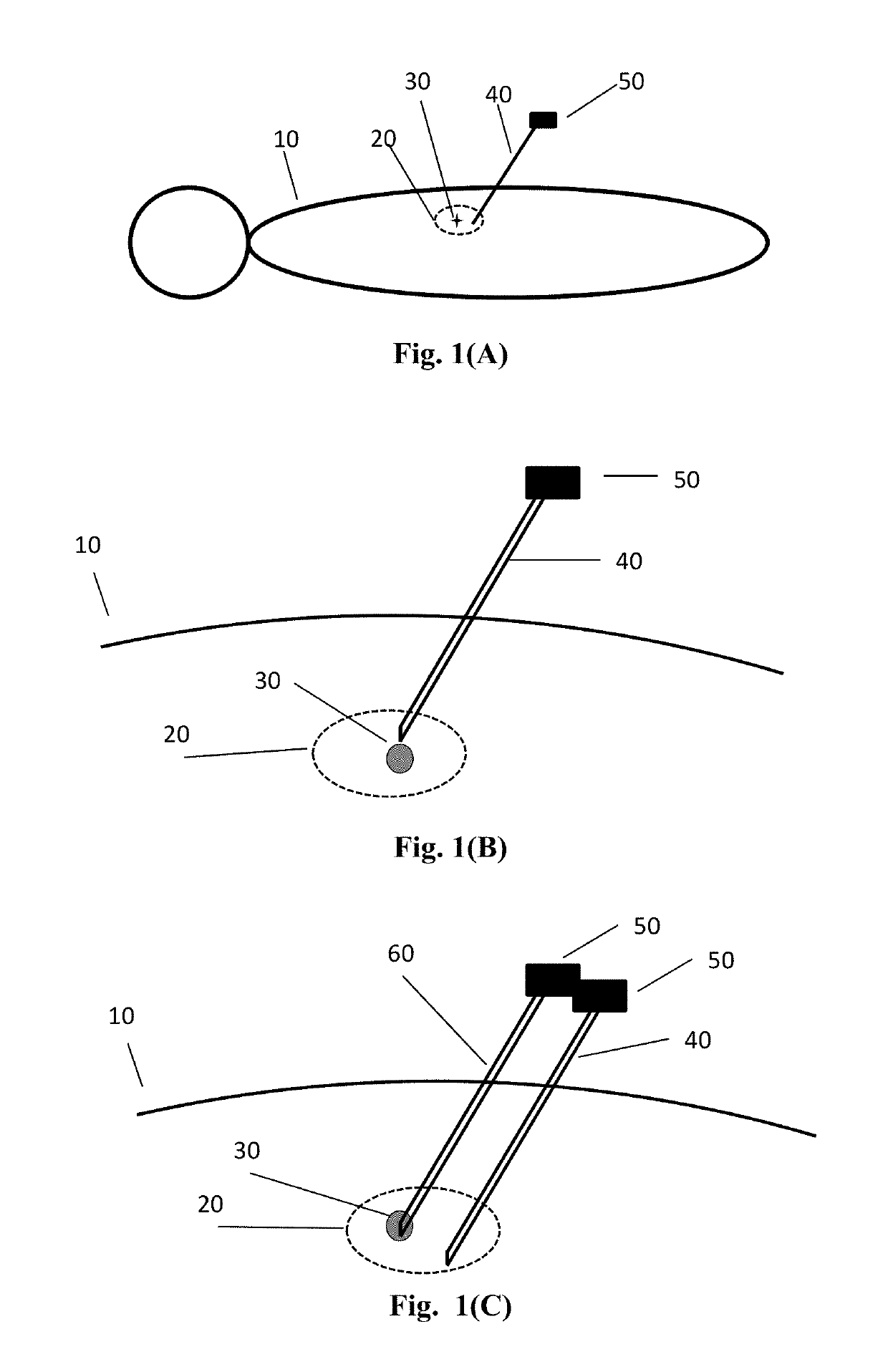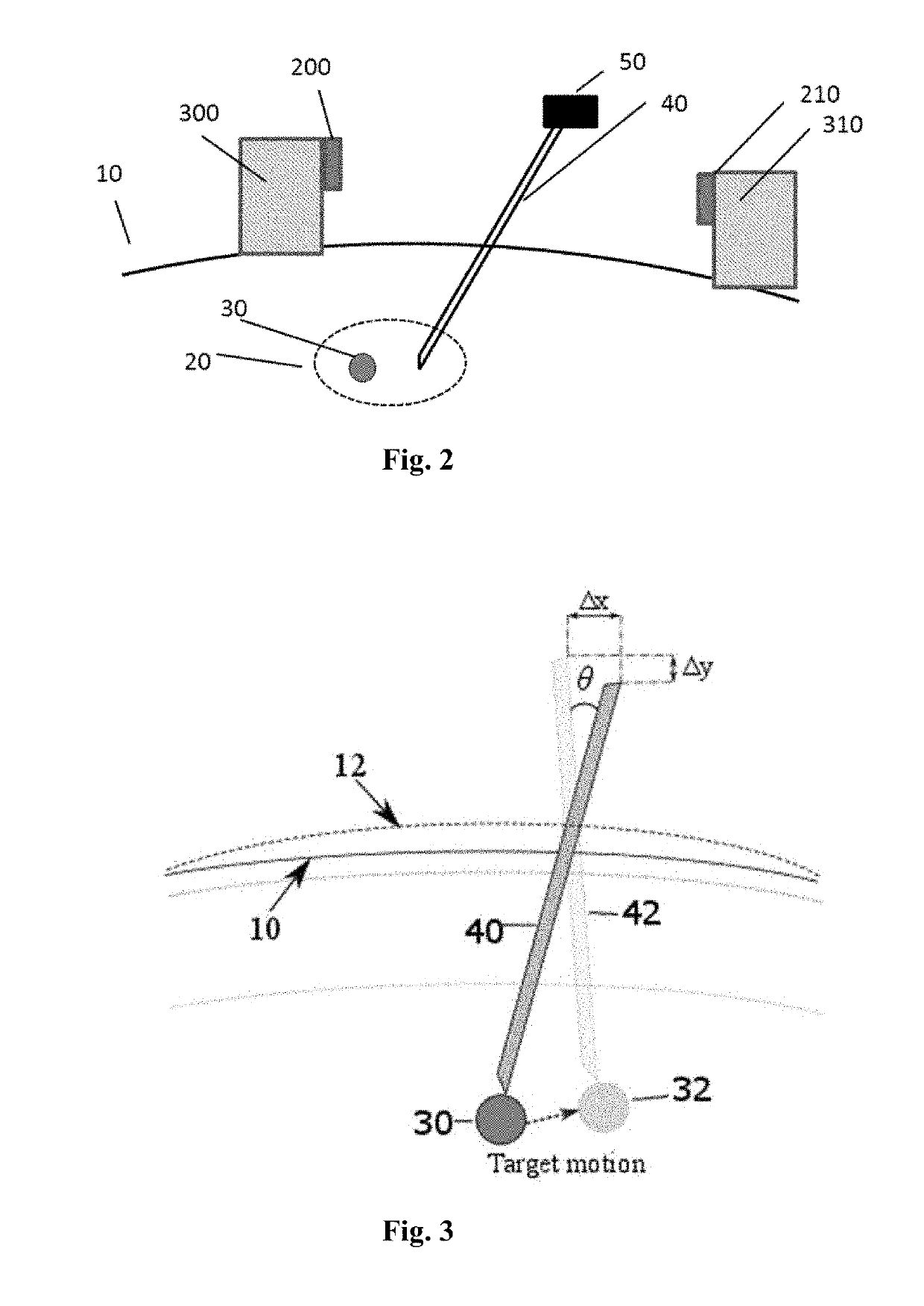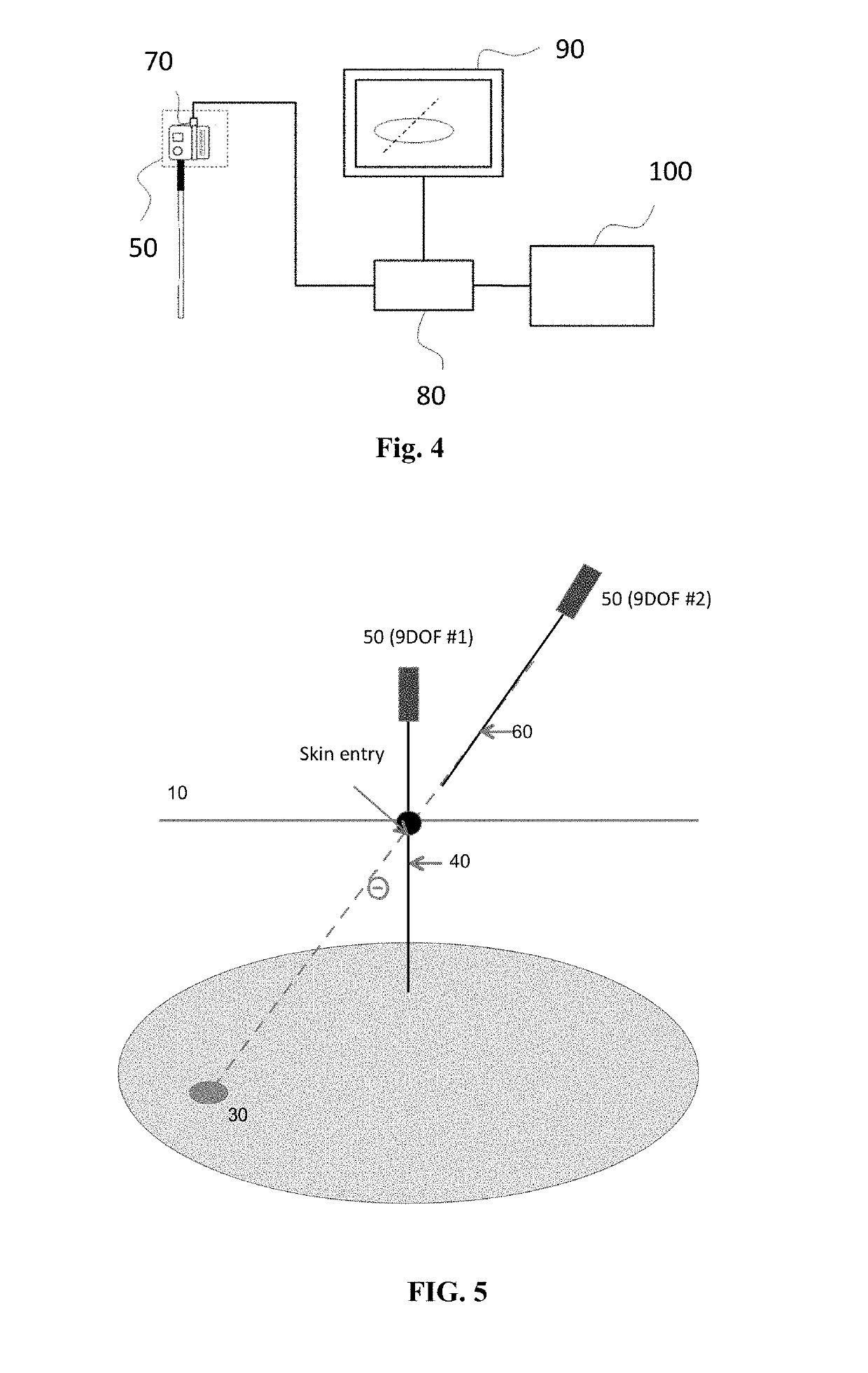Organ motion compensation
a technology of motion compensation and organs, applied in the field of medical devices, can solve problems such as insufficient treatment, difficult tasks, and inaccurate needle placemen
- Summary
- Abstract
- Description
- Claims
- Application Information
AI Technical Summary
Benefits of technology
Problems solved by technology
Method used
Image
Examples
example 1
[0086]In one example, a set of cross sectional images will be taken and stored in the external computer for intervention planning. The target location and skin entry points, as well as the approach line connecting these two controlling points are marked and digitized in the computer. The physician will be instructed to align the intervention device to the planned approach line with the help of position tracking sensor element attached to the intervention device. Alternatively, the stereotactic frame will be placed near the skin entry point, and approach path is provided by aligning intervention tool holder to the desirable tool approach path. The stereotactic frame can be motorized.
[0087]In the first instance, an in-situ sensor element is placed at the needle tip for direct motion tracking of target organ. The receiver can be placed on the abdomen. The receiver can then be registered to the cross sectional imaging system. Thus, when the needle is half inserted to an organ, in-situ s...
example 2
[0097]In this example, the sensor element attached to the tracking needle is a 9 degree of freedom (9DOF) sensor. In addition to the positional information, this sensor or sensors include an inertial measurement unit with a 3-axis gyroscope, a 3-axis accelerometer and a 3-axis magnetometer. The sensors, devices, and methods as described in U.S. Provisional application Ser. No. 62 / 268,378 are herein incorporated by reference in their entirety.
[0098]FIG. 5 show the 9 DOF sensor attached to the tracking needle and a second 9 DOF sensor attached to the insertion needle. In real time, continue to feedback relative angle and error from the planed path when the tracking needle is moving, or in any phase of breath holding, provide the relative angle and planed position of relative angle at the entry point 110.
[0099]FIG. 6 shows a sensor in an insertion where a robot 120, which is also registered with the sensor / tracking needle with image registration. The solid squares indicate a sectional ...
example 3
[0102]Lesion Motion in Liver. In this example, clinical data was used to measure lesion motion in liver during respiration. Liver CT images of 64 scans obtained from four patients were used to measure the target motion in liver. The scans were obtained during liver biopsy and ablations cases. The patients did not move during the procedures and the main cause of motion in the liver was respiration. A structure that resembles the lesion was localized manually in each image frame of every CT scan (FIG. 7) using a free open-source medical image computing software, 3D Slicer. The localization method was examined and reviewed by board-certified physician in general surgery with five years of experience in percutaneous ablation therapies. The results show that the target maximum absolute displacement was 12.56 mm. The main component of this motion was a superior-inferior shift 5.5±3.84 mm. The liver additionally showed motion in anterior-posterior 3.77±2.07 mm and left-right direction (3.1...
PUM
 Login to View More
Login to View More Abstract
Description
Claims
Application Information
 Login to View More
Login to View More - R&D
- Intellectual Property
- Life Sciences
- Materials
- Tech Scout
- Unparalleled Data Quality
- Higher Quality Content
- 60% Fewer Hallucinations
Browse by: Latest US Patents, China's latest patents, Technical Efficacy Thesaurus, Application Domain, Technology Topic, Popular Technical Reports.
© 2025 PatSnap. All rights reserved.Legal|Privacy policy|Modern Slavery Act Transparency Statement|Sitemap|About US| Contact US: help@patsnap.com



